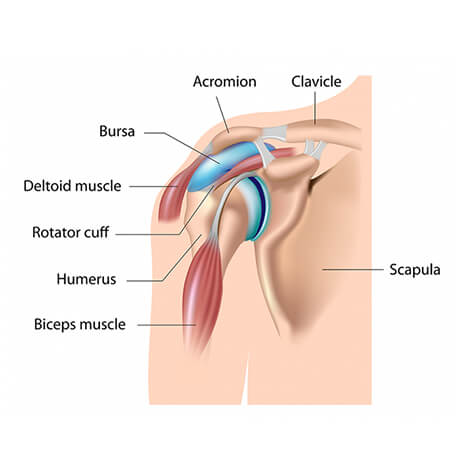
When it comes to shoulder bursitis there is no sure fire way to tell if you have it or not
Bursitis is often caused by repeated minor micro-traumas, which will produce the same symptoms as a single more severe injury.
People who constantly have to lift their heads above their shoulders (especially those who do so for extended periods) are more likely to develop shoulder bursitis than others. Athletes, painters and wallpaper hangers are also at a high risk of developing bursitis.
Pain and swelling are common in both the shoulder and elbow. The pain usually comes first, followed by the tingling of the affected muscle. This can also be accompanied by tenderness.
Bursal pockets are pockets of fluid between bones. The cause is not yet known, but the idea is that the fluid expands because of pressure from surrounding muscles and causes swelling. This is common in athletes and can cause a variety of symptoms such as swelling and redness around the elbow joint.
It is not uncommon for shoulder pain to become worse during exercise, particularly if you are using a lot of pain medications or over-the-counter medications. This can lead to further pain and even inflammation, which will make the pain worse. The result is that pain relief becomes difficult to obtain.
Treatment is usually aimed at removing the bursa or reducing the inflammation, reducing pain and inflammation and preventing the bursa from becoming irritated again. You should seek advice from your doctor if you experience severe pain or inflammation.
There are plenty of ways to treat pain and inflammation, such as physical therapy, massage and exercise, but this is only for mild cases of bursitis. For more severe cases you will need to see a doctor.
Bursus is made up of cartilage and bone, and if they get inflamed or damaged it can be very painful and result in pain. Your doctor will probably prescribe pain relievers, anti inflammatory drugs, physiotherapy or other treatments to help with the pain.
Surgery may be necessary, but it is very rare for bursitis to become too serious and require a corticosteroid injection or surgery. If you do end up having surgery it is often considered an outpatient procedure and most people can return to work immediately.
Other treatment methods include muscle relaxants (such as hydrocodone), ice packs, anti-inflammatory medicines, ultrasound, heat, or ultrasound. In some cases, if you have serious bursitis it may be necessary to use an osteopathy, chiropractic or massage to reduce inflammation.
Anti-inflammatory drugs are available over the counter, but these often come with undesirable side effects like nausea, vomiting, dizziness, stomach upsets and headaches. They can also cause unpleasant side effects such as headaches, depression, insomnia, blurred vision, drowsiness, dry mouth and blurred vision.
There are some forms of pain relief are available, but these often don't provide adequate pain relief and can be very uncomfortable. Common pain killers and anti-inflammatory drugs are usually the best form of pain relief. Nonsteroidal anti-inflammatory drugs are often used for temporary relief.
Many people with bursitis have reported that stretching helps relieve the pain. Stretching exercises and regular exercise can increase blood flow to the affected area, but they can cause problems if done incorrectly.
Some people will report pain relief with icing the affected area or using ice packs on a daily basis, while others will find relief after doing some physical therapy exercises. If pain persists after using these methods, it is worth seeking medical advice.
Muscle pain from bursitis can be caused by overuse and it is important to treat it as soon as possible. One way of treating this problem is by strengthening your upper back and shoulder muscles through regular massages or exercises. If these techniques do not resolve the problem, it is important to visit a chiropractor or orthopedic for a more thorough examination and diagnosis.
Although shoulder bursitis is very common, many people do not realise that many people have it without actually knowing it! This means that if you notice any aches and pains you need to visit a physician right away.
Bursitis can cause some people great pain, so it is important that you avoid activities that could further irritate it. If your bursitis is mild or you have been able to alleviate some pain with over the counter pain relievers or nonsteroidal anti-inflammatory medications, you should try and stick with these treatments.

